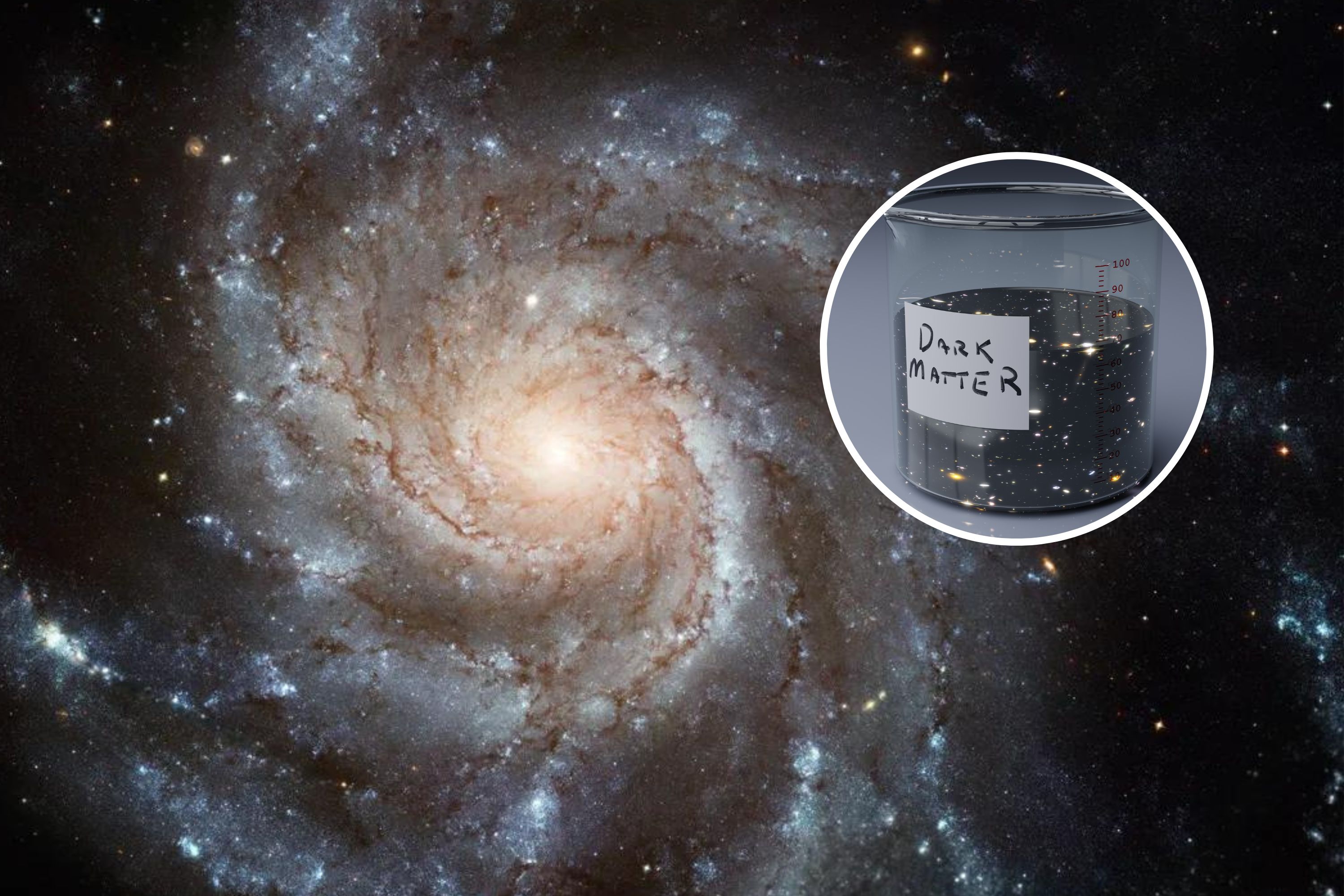Dark matter–star “conspiracy” debunked by astronomers
An astronomical “conspiracy” about how stars and dark matter interact has been disproved by scientists.
This debunked theory was originally suggested to explain why matter appears to decrease in density at the same rate across the center and the edges of galaxies, which confused scientists, as galaxies around the universe vary significantly in shape, size and age.
Dark matter had been theorized as an explanation for this phenomenon, but now, according to a paper published on August 10 in the journal Monthly Notices of the Royal Astronomical Society, this may not be the true reason.
“This homogeneity suggested that dark matter and stars must somehow compensate for each other in order to produce such regular mass structures,” study co-author Caro Derkenne, an ASTRO 3D researcher from Macquarie University in Australia, said in a statement.

A Hubble Space Telescope image of the face-on spiral galaxy Messier 101, with a stock image of dark matter in a beaker inset. A long-held theory about dark matter’s role in galaxies has been debunked, researchers said.
NASA and ESA / ISTOCK / GETTY IMAGES PLUS
Unlike ordinary matter—which includes everything we see, such as stars, planets and people—dark matter does not emit, absorb or reflect any electromagnetic radiation, such as light, making it basically undetectable through traditional means, including telescopes.
While dark matter cannot be seen directly, its presence is inferred from its gravitational effects. For example, galaxies rotate at speeds that cannot be explained solely by the visible matter within them, with dark matter providing the extra mass needed to explain what we see. Dark matter’s gravity also bends light from distant objects, in a phenomenon known as gravitational lensing.
About 27 percent of the universe is thought to be made up of dark matter, with only about 5 percent made up of “normal” matter, according to NASA. The rest of the universe is composed of dark energy.
The long-standing astronomical “conspiracy” suggested that dark matter could explain why matter density decreased at the same rate in a galactic center as it did at a galaxy’s edge, implying that dark matter and stars interacted in some way.
In the new paper, the researchers suggest that these similarities in density may not be due to how the galaxies themselves are built, but are instead a result of how we measure them. They analyzed 22 galaxies using the European Southern Observatory’s Very Large Telescope in Chile and used the data to create complex models of the galaxies.
“In the past, people built simple models that had too many simplifications and assumptions,” Derkenne said. “Galaxies are complicated, and we have to model them with freedom or we’re going to measure the wrong things. Our models ran on the OzStar supercomputer at Swinburne University, using the equivalent of about 8,000 hours of desktop computing time.”
The researchers found that the long-held theory about dark matter’s role in galaxies was likely untrue, as matter was found to be nonhomogeneously distributed across the galaxies, debunking the “conspiracy.”
“Our analysis acts as a caution in making strong assumptions when constructing dynamical (or lensing) models of galaxy internal mass distributions and structure,” the researchers wrote in the paper. “The more closely we examine galaxies, the more rich in structure they reveal themselves to be—and with the increasing observing power of modern integral field units, we are continuously improving our ability to explore distant galaxies in unprecedented detail.”
Do you have a tip on a science story that Newsweek should be covering? Do you have a question about pulsars? Let us know via science@newsweek.com.
References
Derkenne, C., McDermid, R. M., Santucci, G., Poci, A., Thater, S., Bellstedt, S., Mendel, J.T., Foster, C., Harborne, K.E., Lagos, C.D.P., Wisnioski, E., Croom, S., Remus, R.-S., Valenzuela, L.M., van de Sande, J., Sweet, S.M. & Ziegler, B. (2024). The MAGPI survey: Evidence against the bulge–halo conspiracy. Monthly Notices of the Royal Astronomical Society, 533(2), 1300–1320. https://doi.org/10.1093/mnras/stae1836


